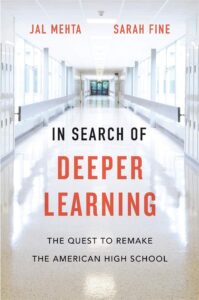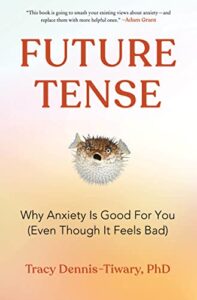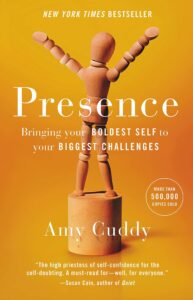Public Speaking Curriculum. Simplified.

Gary Rybold PhD
ProjectCom Founder
Fifteen years ago, I started developing an innovative pedagogy for teaching communication (referred to as the IVC Project), to serve as a rich model for instructors to inject greater vitality and depth into their classrooms.
Two years ago, I brought that pedagogy into dual enrollment college-level communication courses for ninth graders. Not only did the students overcome anxiety and learn how to develop arguments; they actually had fun. The pedagogy worked effectively in the high school setting with 100% of the students successfully completing the basic communication course. Each student presented over 20 speeches and wrote over 30 pages. They experienced collaborative learning using critical thinking as a system during every class meeting.
With retirement from community college (fall 2022), I now offer my materials FREE OF CHARGE. Adapted for Christian high schools, the basic course for public speaking offers day-by-day instructor materials along with compatible PowerPoint slides.
The first curricula, “Come Now, Let Us Reason Together” is appropriate for ninth grade communication instruction in public speaking.
The second curricula, “Always be ready” introduces students to debate (coming December 2022).
I believe the project pedagogy can be learned by motivated educators (even those without communication degrees) using the material on this site. Over the past 15 years, details for the day-by-day lessons have been honed to clarify a curriculum where the students do more talking than the instructor. At this point, the pedagogy represents the ease of a “plug and play” method.
Each session of the curriculum brings together the four Cs of 21st Century learning: Communication, Collaboration, Creativity, and Critical Thinking.
I am also available for consulting for staff development or conferences. To learn more, contact me at: gary.rybold@projectcom.org
Background Materials (Extensive)
European Journal of Applied Linguistics Article
Critical Thinking-Based Instructional Strategies for Second Language Learners in Oral Communication Classrooms (2016)
Explore the project in use at high schools, colleges, and universities across the country
IVC Project Instructor Guide
Accentuating the Positive in Public Speaking Instruction (2015)
Presented at the Annual Convention of Western States Communication Association
Try the program first hand
Recommended Reading
In Search of Deeper Learning – The Quest to Remake the American High School (2019)
– Jal Mehta and Sarah Fine
 I recommend this book to every educator I meet. The book’s major premise is that education in the United States needs massive change. The authors drew their conclusions from their studies conducted at various types of high schools. One conclusion I find particularly insightful was on page 42:
I recommend this book to every educator I meet. The book’s major premise is that education in the United States needs massive change. The authors drew their conclusions from their studies conducted at various types of high schools. One conclusion I find particularly insightful was on page 42:
Powerful learning experiences integrate seemingly opposing virtues: mastery, identity, and creativity. Whether in class, extracurriculars, clubs, or elsewhere, students identify their most powerful learning experiences as those that gave them opportunities to develop knowledge and skill (mastery), become intensely connected to a domain (identity), and have an ability to enact their understandings by trying to make something meaningful to them (creativity). Apprenticeship models, in which students tried (and often failed) to do something under the watchful eye of more experienced teachers or students, were particularly well aligned with this integrated mode of learning.
Twenty themes on the strength of debate as a deep learning experience were outlined (P. 304-305) culminating with a conclusion that debate (and other extracurriculars) “constitute their own, second, ‘grammar of schooling.’ one that sits in plain sight white alongside the grammar that governs most of the nation’s core academic classes. This second grammar embodies a very different set of principles than the first by emphasizing:
- Students as active producers rather than passive recipients
- Learning by doing rather than by transmission
- Clear purposes and external audiences rather than simply working to please the teacher
- Multi age grouping rather than age graded classrooms
- Integration of students with different skill levels rather than tracking
- Learning through apprenticeship rather than didactic instruction (p, 306)
Page 307 points to one type of recommended change:
Thus, rather than focusing on the ways in which extra curriculars are structurally special, perhaps we should think more about whether there are ways to engender some of the same qualities of learning in core classes. There is much that the periphery can teach the core, if only we open ourselves to the possibilities created by the second grammar of schooling.
Future Tense – Why Anxiety Is Good For You (Even Though It Feels Bad) (2022)
-Tracy Dennis-Tiwary
The author uses a pop style to share the research to prove her point: “… it’s not that we’re in the midst of a public health anxiety crisis; we’re in a crisis of the way we cope with anxiety.” (P. 18)
The book reminded me of Kelly McGonigal’s TED talk: How to make stress your friend.
The video is used in my class, and it always gets a strong positive response from students.
Dennis-Tiwary makes many additional points: Kids are not fragile (chapter 9) and being anxious in the right way (chapter 10).
Presence – bringing your boldest self to your biggest challenges (2015)
Amy Cuddy
Amy Cuddy got the country interested in power posing with her TED talk (65 million views):
There was some controversy coming from Dr. Cuddy’s writing partner on whether or not power posing was just a placebo effect. Dr. Cuddy answered the issue with a 2018 journal article. Regardless of where you land on the controversy, her video and book provide lots of suggestions for reducing anxiety.
For example, her ideas on personal power provide a different goal for students looking to put their best foot forward with personal power:
Personal power is characterized by freedom from dominance of others it is infinite as opposed to zero sum – it’s about access and control of limitless inner resources, such as our skills and abilities, our deeply held values, our true personalities, our boldest selves. Personal power… makes us more open, optimistic, and risk tolerant and therefore more likely to notice and take advantage of opportunities. (P. 113)
The way you carry yourself is a source of personal power – the kind of power that is the key to presence. It’s the key that allows you to unlock yourself – your abilities, your creativity, your courage, and even your generosity. It doesn’t give you skills or talents you don’t have; It helps you to share the ones you do have period it doesn’t make you smarter or better informed; It makes you more resilient and open. It doesn’t change who you are; It allows you to be who you are. (P.198)
Free COurse CUrriculum for Christian Educators
You can find all of the materials for the debate course and public speaking course at this Google
shared drive link:
https://drive.google.com/drive/folders/1ljYvIEG_lrQ89SBmU2mmc_LNuLUsF1sm?usp=sh
aring
Always Be Ready – A debate textbook designed for Christian classrooms. The accompanying
slides review the chapters. In the files above the slides, you will find a syllabus and instructor
guide.
Come Now, Let Us Reason Together – Public speaking curriculum – A detailed instructor guide
designed for Christian classrooms. The accompanying slides present the lecture material from
the instructor guide. In the files above the slides, you will find handouts, a syllabus, procedures
for speeches, and a guide for switching the curriculum to synchronous modality (zoom
classrooms).
Both courses are similar in the way they are taught. In the beginning third of the semester, along
with lectures by the instructor, students read the textbook chapters, write short papers on the
concepts, and share in small groups. For the rest of the semester, students give speeches and
serve as assessors in small group collaborations every class session.
Feel free to share with other Christian educators.
If you need any clarification, please contact me at Gary.Rybold@ProjectCom.org.
You may use the same address for any staff development or conference requests.
May God bless your instruction.
Dr. Gary Rybold
ProjectCom
Gary.Rybold@ProjectCom.org
Acknowledgements:
I thank the friends who helped bring to life the dream of ProjectCom. Chathi Anderson designed
the ppt slides. Kelly Kehoe designed the textbook and supplemental materials. Tim Seavey was
responsible for website design and implementation.


